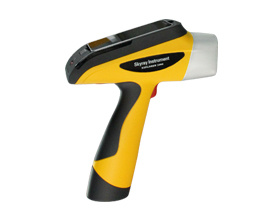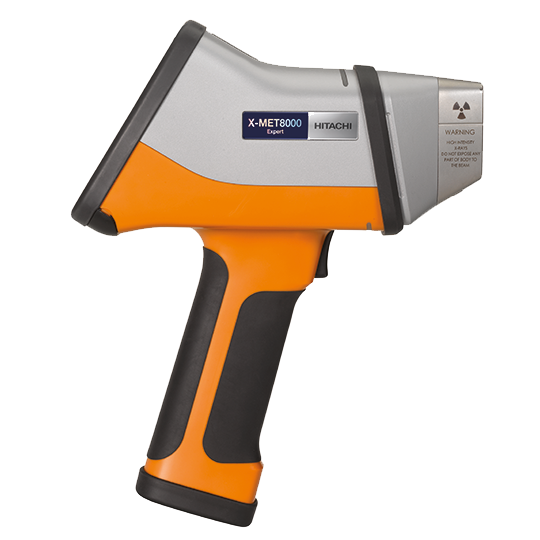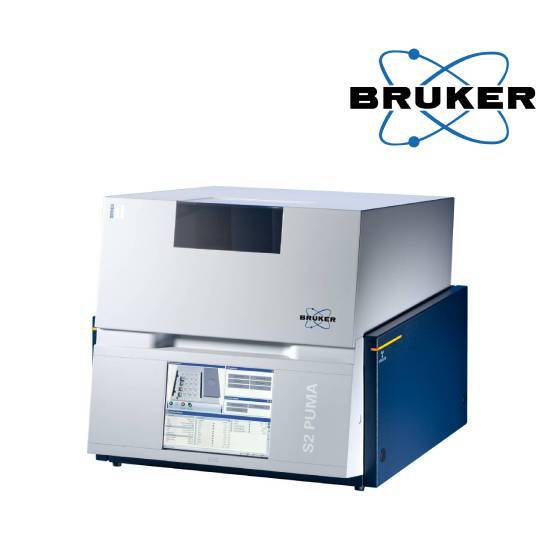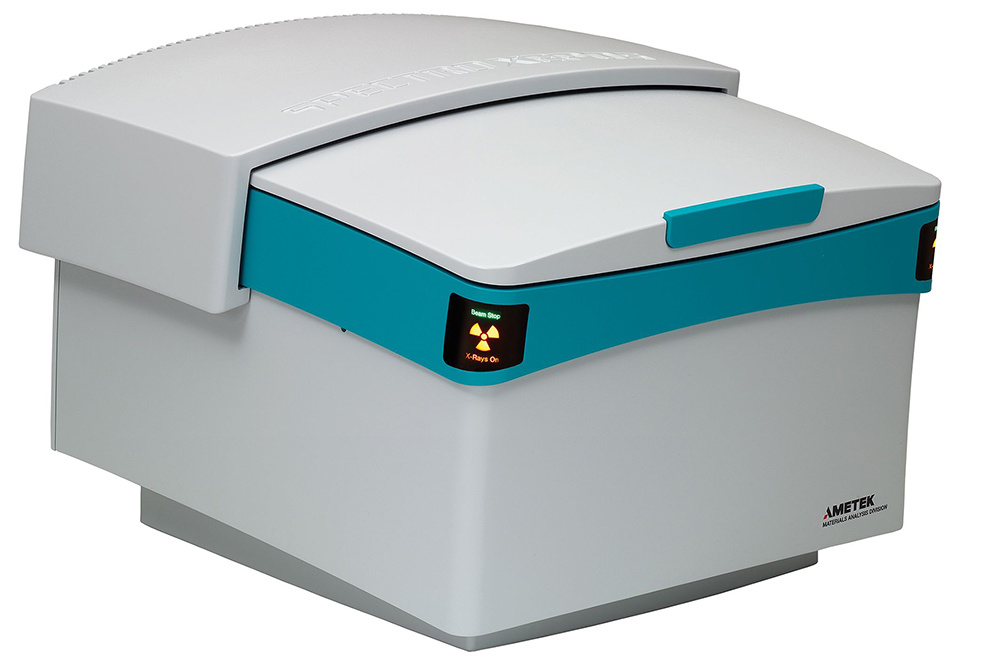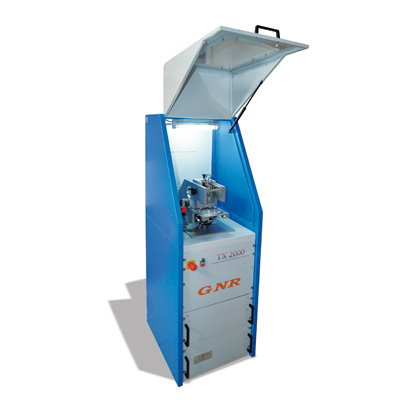
方案详情
文
■ 单内标校正,极大的简化了定量分析,无基体影响;
■ 对于任何基体的样品可单独进行校准和定量分析;
■ 多元素实时分析,可进行痕量和超痕量分析;
■ 不受样品的类型和不同应用需求影响;
■ 独特的液体或固体样品的微量分析,分析所需样品量小;
■ 优秀的检出限水平;
■ 出色的动态线性范围;
■ 无需任何化学前处理,无记忆效应;
■ 非破坏性分析,运行成本低廉。
方案详情

JOURNAL DE PHYSIQUE IVC4-627Colloque C4, supplement au Journal de Physique ⅢI, Volume 6,juillet 1996 C4-628JOURNAL DE PHYSIQUE IV A New Method for the Determination of S, V, Fe, Ni, Pb and OtherElements in Some Distilled Fractions of Crude Petroleum by TXRF F. Pasti, A. Torboli, C. Zanetti and M. Marchi* ITAL Structures, Via M. Misone, 38066 Riva del Garda TN, Italy *IES-Italiana Energies S.p.A oil refinery of Mantova, Strada Cipata 79, 46100 Mantova, Italy ABSTRACT: The possibility of employing the Total Reflection X-ray fluorescence(TXRF) technique1 ufeo fr6 the analysis of some derivatives of petroleum crude oil (Petrol,Diesel oil, Fuel oil), is demonstrated with the help of certified standards (NIST.ENEL, ICIP). The quantitative analysis is conducted via an internal standard method.Some problems about elements volatility (S in Diesel oil and Pb in Petrol) are solvedto permit an accurate quantitative simultaneous determination of the elements (from Z= 13 to Z = 90 with a detection limit in the range from ppb to ppm) present in thesamples of petroleum derivatives. The analyses are conducted with a new Total1i6Reflection X-ray spectrometer (TX 2000 supplied by Ital Structures) 1.INTRODUCTION The most important metallic and non-metallic elements found in the distilledfractions of crude petroleum are S, Ca,V, Mn, Fe, Co, Ni, Pb with concentrationsvarying frotm parts % to ppm. Some of these elements are found in the form oforganic and inorganic salts, organometallic compounds or chelates. The sulphur iscontained in some organic compounds: thioalcohols, thioethers, thiophenols,thiophene, sulphidric acid and elemental sulphur. The lead contained in the petrol isadded in the form of the antidetonant compounds tetraethyl lead and tetramethyl lead. There are many reasons for interest in the quantification of these elementsThe sulphur always contained in the distilled fractions is a source of environmentalpollution. The same is also true for the lead in petrol. The presence or absence of otherelements can be used to distinguish between different types of oil or to show itsmigration and accumulation in deposits (1 and 2). Of great interest is the ability tomonitor the presence of these elements with a detection limit applicable in the contextof environmental health. We aim to demonstrate that the quantitative analysis of theseelements in crude oil samples can be satisfactorily conducted using an internal standardmethod. 2.TXRF PRINCIPLES In principle, analysis of X-ray fluorescence in total reflection (3, 4, 5) is thesame as conventional X-ray fluorescence measurement using energy analysis, but ituses a special geometrical arrangement to maximise the ratio between useful signal andbackground noise. When radiation passes from a medium of lower density to one of a higher density it is totally reflected provided the angle of incidence is below a certaincritical angle, typically a few milliradians for X-rays. Beam penetration into thereflecting surface is minimal. By illuminating the sample in a beam that is being totallyreflected, absorption of the beam in the supporting substrate is largely avoided therebyand with it the associated scatt101Sering and background noise. A further contribution to the reduction of background noise is obtained byminimising the thickness of the sample. A small drop of the sample (10-100 pl of thesubstance dissolved in an appropriate solvent) is placed on a optically flat fused silicacarrier. On evaporation of the solvent a thin film a few nanometers thick remains. Inuse the greater part of the scattering which normally arises from the sample and itsmatrix is eliminated. Fig.1 TX 2000 geometry. 3.EXPERIMENTAL 3.1 Treatment of the samples One of the most important feature of TXRF is the ability to achieve anaccurate quantitative analysis using a single internal standard. We use a water standardsolution, which is cheap and readily available and to permit the mixture with the oilsample we use THF solvent. Sample materials and standardised petroleum oils (Tab 1), supplied by MessrsItaliana Energia e Servizi S.p.A IES, oil refinery of Mantova, have been treated asfollows: Petrol: we had to quantify the lead concentration. The problem was the highvolatility of the lead compounds (tetraethyl and tetramethyl lead). We solved this bymineralising the lead. We prepared a solution using THF (500 pl Carlo Erba RPE).HNO: 65% (100 p1 Merck Suprapur) with Ga 1000 ppm (10 ul Merck standardsolution) as internal standard. We added 100 ul of petrol sample to it, so that thenitric acid present in the solution made the lead into the non-volatile Pb(NO3)2. Nowwe pipetted 10 pl of this solution on the sample holder and evaporated it by IR light. Diesel oil: we had to quantify the sulphur concentration, the problem was nowthe high volatility of the sulphur compounds when the sample is evaporated. Weprepared a solution with THF (1 ml Carlo Erba RPE), sample (100 pl Diesel oil) andGa 1000 ppm (10 pl Merck standard solution) as internal standard. Then we pipettedonly 5 ul onto the sample holder and measured the sample without evaporating it. In this mode the background scattering is not high and a very accurate sulphurquantification is possible. Fuel oil: we had to quantify some elements, the problem was the highviscosity and the consequent lack of homogeneity in the sample as supplied. We havereferred to the method illustrated in Ref. 3 to homogenise the sample. We prepared asolution with THF ( about 2 ml Carlo Erba RPE), sample (about 0.1 g Fuel oil) andGa 1000 ppm (100 plMerck standard solution) as internal standard and we pipetted10 p of this solution onto the sample holder and evaporated it by heating.The quantity of sample, standard and solvent in the solution could differ but they arealways exactly weighed (±0.1 mg). 3.2 Measurements Before depositing the sample we controlled the cleanliness of the sampleholder by making a measurement with it empty. In the same way we checked thesolvents used. Then we deposited the samples as described in the sample treatment.For each sample we repeated the measurement at least 5 times. The voltage and thecurrent used in the measurements were always 35 kV and 30 mA, and the measuringtimes varied from 200 s to 500 s. The spectra were analysed by the quantitative analysis software WinTXRFsupplied by Ital Structures and checked with the QXAS-AXIL package supplied bythe IAEA of Vienna. The results are given in Tab 1 and Tab 2. STANDARDSAMPLE CERTIFIED ELEMENTSQUANTITY TXRF MEASURED (N=5)ELEMENTS QUANTITY % DIFFER ENCE O.C. NIST 1619 a S (0.725±0.007)%wT S (0.755+0.007)%wT 4 DIESEL OIL S 1.60%wT S(1.48+0.2)% wT 7 STANDARD ICIP HEAVY DIESELOIL STANDARDICIP S 2.45% wT S (2.45+0.3)% wT 0 O.C ENEL Ni (53.1±1.1) ppm V(410.1±10.5) ppm Ni (54±4) ppm V(410±30) ppm 1.7 0.02 PETROL STANDARD ICIP Pb 0.323 g/l Pb (0.324±0.016)g/1 0.3 O.C. NIST 1634 b S (2.80±0.05)% wT Fe (31.6±2.0) ppm Mn (0.23±0.03)ppm Ni (28±2) ppm Sc (0.18+0.04) ppm V(55.4±1.1)ppm S (2.94±0.3) %WT Fe (28±3) ppm Mn < 1 ppm Ni (29±3) ppm Sc<1ppm V (60±4) ppm 5 :113 8 DIESEL OIL BTZSTANDARD ICIP S 0.048 %wT S (0.048±0.007)%wT 0 O.C. ENEL Ni (22±1.5) ppm V(15.8±1.2) ppm Ni (25±2) ppm V (15±2) ppm 125 DIESEL OIL STANDARD ICIP . S 0.098 % wT S (0.092+0.005)%wT 6 PETROL STANDARD ICIP Pb 0.172 g Pb (0.168±0.008)g/1 2 SAMPLE TXRF MEASURED (N=5) ELEMENTSQUANTITY COMMERCIAL PETROL Pb(0.146±0.01)g/ DIESEL OIL CORR. UNICHIM 1/95 S (480±30) ppm DIESEL OIL S.38 S (620±46) ppm DIESEL OIL S.33 S (408±28) ppm Tab.2 Some characteristic spectra are shown here. Note the very low background for thesamples. This feature permits us to reach detection limits of 9 ppb for Pb in Petrol,about 50 ppm for S in Diesel oil and about 0.1 ppm for the metals in Fuel oil. LEGEND: The peaks are due to the K and L transitions. Si, Ar and Au signals are dueto glass sample holder, air and the detector respectively. cps Petrol Standard ICIP Pb 0.324 g/l. Mo source 35 kV, 30 mA. 10 pl, live time 200s cps Diesel Oil Standard ICIP S 1.6%. Mo source 35 kV, 30 mA. 5 ul, live time 300s. Fuel Oil Standard O.C. NIST 1634 b. Mo source 35 kV, 30 mA.10 ul, live time 300s. Fuel Oil Standard O.C. ENEL V 410 ppm Mo source 35 kV, 30 mA. 10 pl, livetime 300 s. 3.3 Data analysis WinTXRF is software for the quantitative analysis of energy dispersive TotalReflection X-ray fluorescence. The fitting algorithm is an iterative chi-square Marquartroutine based on a sum of Gaussian peaks. Then the concentration of analyte iscalculated as follows: JOURNAL DE PHYSIQUE IV where: Cx is the unknown analyte concentrationCis is the internal standard concentrationIis is the area of the peak due to the internal standardIx is the area of the peak due to the analyte RF is the fluorescent yield RF is a curve found by experiment. We report on only the mentioned elements but we have quantified all the otherelements present at the same time. We used the same RF curve for the quantificationof all the elements present in Petrol and Fuel oil. For Diesel oil we used a differentcurve because the sample in this case was not evaporated . 3.4 Apparatus We used the TX 2000 X-ray spectrometer manufactured by Ital Structures.The geometry for X-ray fluorescence in total reflection is shown in Fig. 1. A primarybeam provided by the X-ray tube with a molybdenum or other appropriate metal-anode is monochromatised and is made to fall on the sample at an angle less than thecritical angle. The fluorescent energy derived from the sample is detected in the solid statelithium-drifted silicon detector which is cooled with liquid nitrogen. The signal from the detector is processed in a counting chain (preamplifier,amplifier, analogue to digital converter) attached to a personal computer via an inter-face card which emulates a multichannel analyser and display controller. Of specialnote is the fact that the use of this solid state detector allows a resolution of 137 eVfor Mn Ko. The monochromator and the characteristics of the detector (high resolutionand thin beryllium window) further improve the high detection limit typical of theTXRF method. The TX 2000 detection limit is shown in Fig. 2. Fig.2 Detection limit vs. atomic number of TX 2000 Spectrometer, Mo source 35 kV,30 mA 4. CONCLUSIONS We have verified the powerful method of the TXRF analysis for metallic andnon-metallic elements determination for some distilled petroleum fractions. An accurate quantitative simultaneous determination of the elements (fromZ=13 to Z-90 with a detection limit in the range from ppb to ppm) is possible due tothe absence (which is an inherent feature of TXRF) of matrix effects. Some problemsdue to the volatility of the elements (S in Diesel oil and Pb in petrol) have been solved. References: ( 1. M .Schirmacher,P.Freimann, D.Schmidt and G.Dahlmann: Spect. Acta 48B (1993)199 ) ( 2. N .Ojeda, E .D.Greaves, J.Alvarado and L . Sajo-Bohus: S p ect. A c ta 48B (1 9 93)247 ) ( 3. Y .Yoneda and T.Horiuchi: Rev.Sci.Instr. 42(1971)1069 ) ( 4. P .Wobrauschek and H.Aiginger: Spect. Acta 35B (1980) 607 ) ( 5. A.Prange: S pect. Acta 44B (1989) 437 ) Article published online by EDP Sciences and available at http://dx.doi.org/jp: Tab. 基于一系列认证标准(NIST,ENEL,ICJP),本文证明了使用全反射X射线荧光(TXRF)技术分析石油原油衍生物(汽油,柴油,燃料油)的可能性。定量分析是通过内标法进行的,一些挥发性元素(如柴油中的S和石油中的Pb等)被精确定量同时测定出来(元素从Z=13到Z=90,检出限在ppb到ppm范围内)。
确定







还剩5页未读,是否继续阅读?
利曼中国为您提供《原油中Pb元素检测方案(能散型XRF)》,该方案主要用于原油中重金属检测,参考标准--,《原油中Pb元素检测方案(能散型XRF)》用到的仪器有TX 2000 全反射X荧光光谱仪
推荐专场
X荧光光谱、XRF(能量色散型X荧光光谱仪)
相关方案
更多
该厂商其他方案
更多










